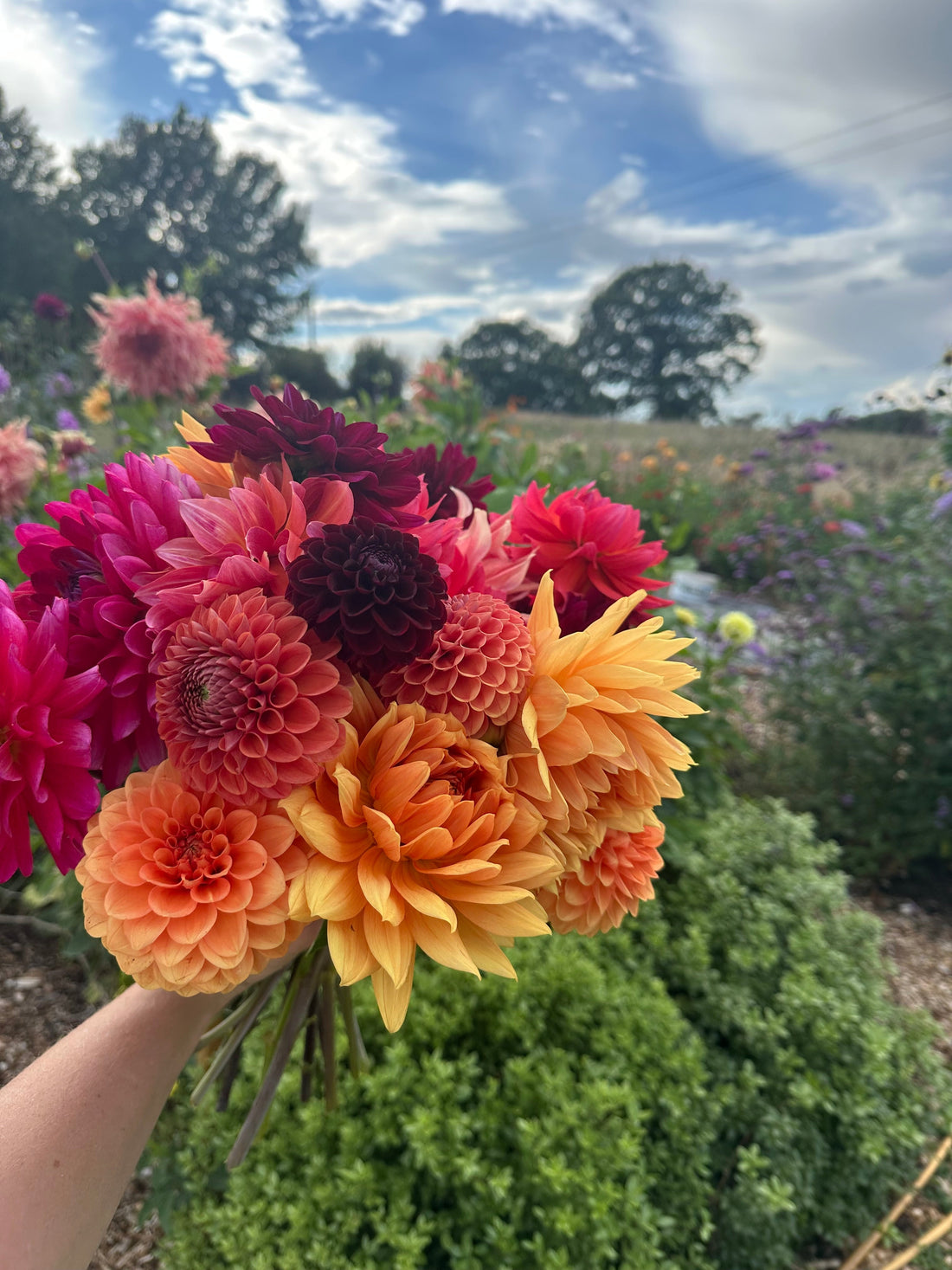
Why Dahlias Steal Late Summer
Share
Shining in the autumn light, with jewel tones and hundreds of blooms: dahlias have a way of turning an ordinary late-summer cutting into something almost theatrical. I grow them for their colour complexity, the astonishing variety of forms and the sheer number of flowers they give me when everything else is winding down. For my customers, particularly autumn wedding clients, they bring a seasonal glamour that is unbeatable.

Seeing an autumn bride’s face when I arrive with hundreds of dahlias is one of the best parts of what I do - there is such a variety of colours, sizes and forms that there is always something to suit the vibe of a wedding. They also keep pumping out the blooms right up until the first frost, performing for me week on week.
It's not always plain sailing and I’ve learned the hard way that dahlias reward planning: I have lost many to a hard frost or poor storage and once I lifted entire clumps without knowing which tubers were which because I hadn’t labelled them at planting. My simple tip for gardeners: label your clumps now before the frosts so you know which to keep, which to share and which to replace next season.
My Favourite Varieties

Burlesca — peachy-pink; small pompom
I love Burlesca for its layered blush tones. It’s long-lasting in the vase, and its small pompom form is brilliant for dense, textural bouquets. Growing note: it’s hard to source and in my experience not reliably hardy, so treat it as a tender clump or label carefully if you plan to lift the tubers. They dry beautifully too.
 Wine Eyed Jill — peachy with a dark centre; informal decorative
Wine Eyed Jill — peachy with a dark centre; informal decorative
This one is a workhorse in arrangements because it plays well with other flowers and keeps its colour and shape in buckets and vases. The contrast of the buff petals and the dark eye adds quiet drama without shouting.
 Dahlia Dark Spirit — deep purple pompom
Dahlia Dark Spirit — deep purple pompom
Dark Spirit is so dark that it seems to suck in the light; its near-black purple is a focal point in any bunch, creating depth and contrast with pinks and creams. I always use it sparingly to admire how it makes other colours sing.
Generatlly, I love pom pom and waterlilly dahlias as they are long-lasting and delicate.
Varieties I Avoid

Dahlia Art Deco This is one I grew this year and won't be planting again. I find it unreliable and the flowers unappealing to my taste; they haven’t grown well for me and the blooms look messy rather than refined.

Large dinner-plate types (for example Lavender Perfection). I find that their size can come at the cost of colour complexity and practical use. They often face sideways, which makes them awkward to arrange and less versatile in mixed bouquets. Cafe Au Lait is the exception to this rule with her gorgeous, creamy tones.

Cactus dahlias do not suit my taste; their spiky form is unappealing to me and I'd rather grow a stunning waterlily type instead.
I won’t repeat everything I cover in my overwintering guide, but for UK growers remember that dahlias reward good staking, a steady feed through summer and mulching if you plan to keep them in the ground over winter. If you’re trying dahlias for the first time, start with a small selection of reliable varieties and keep notes on where you planted them.
If you’d like to see these varieties in real bouquets, or to try arranging them yourself, I run practical, seasonal workshops that focus on sustainable growing of cut flowers; simple, hands-on sessions designed for growers and flower lovers who want to get more from their patch - watch this space!
